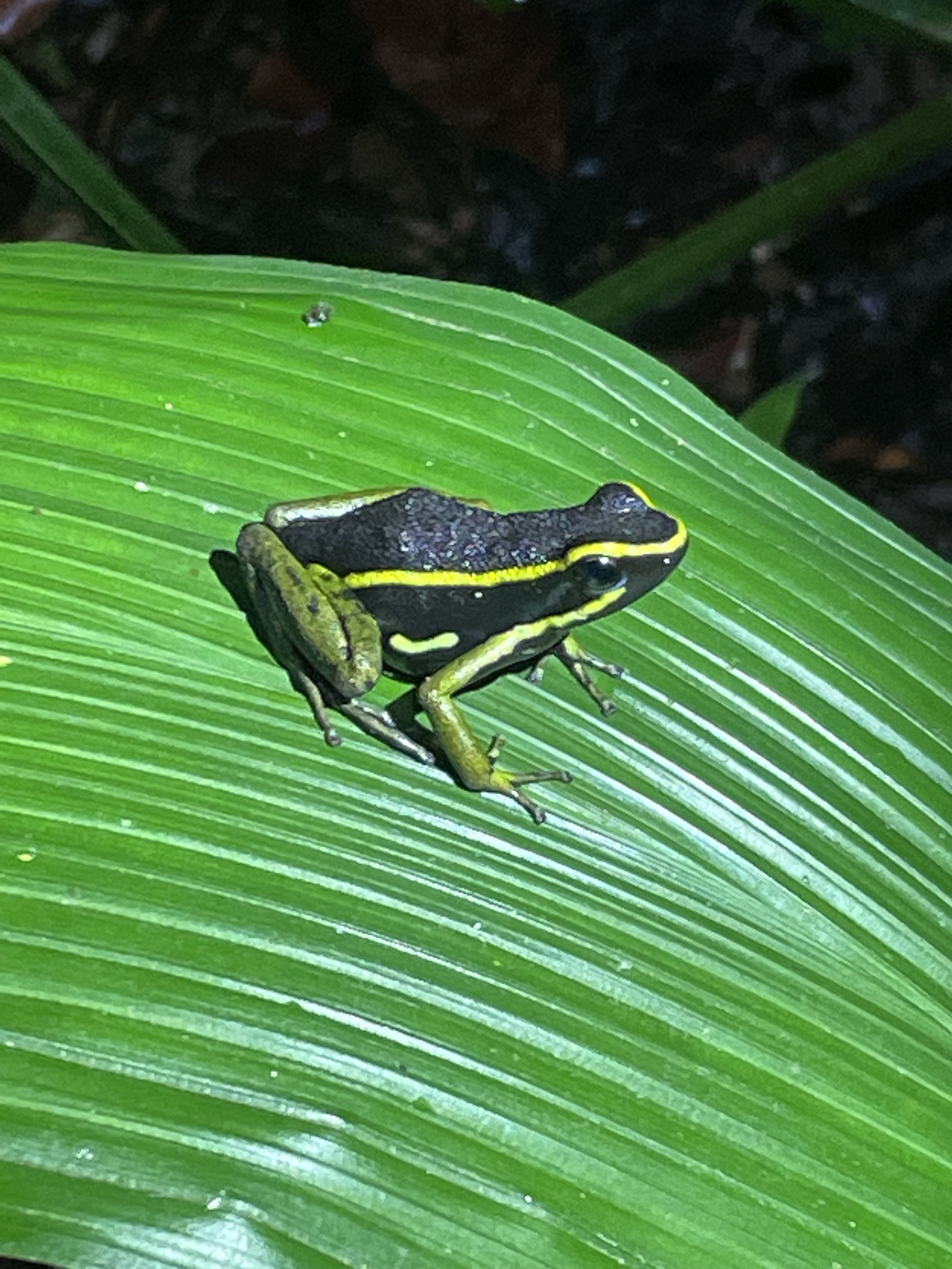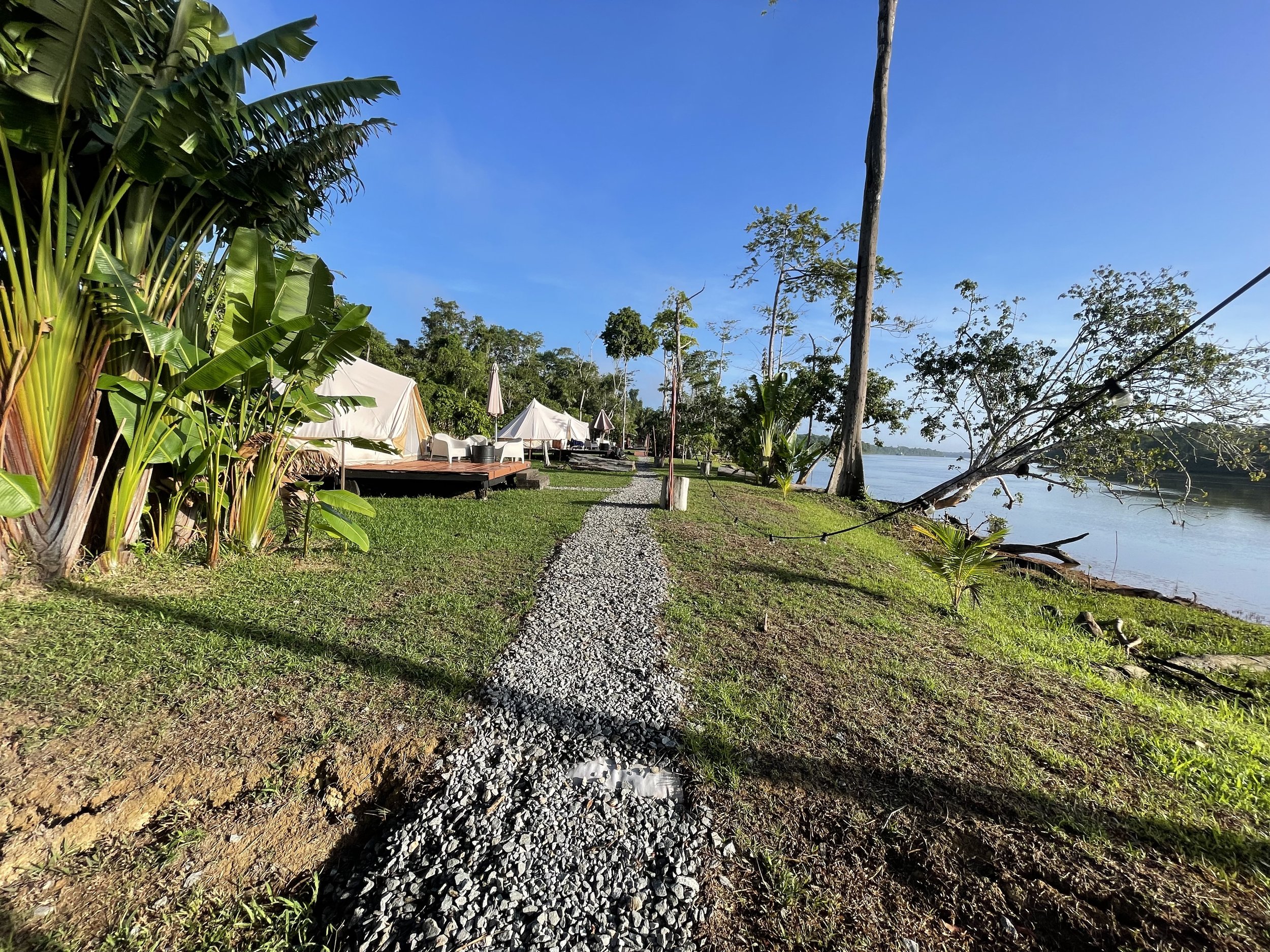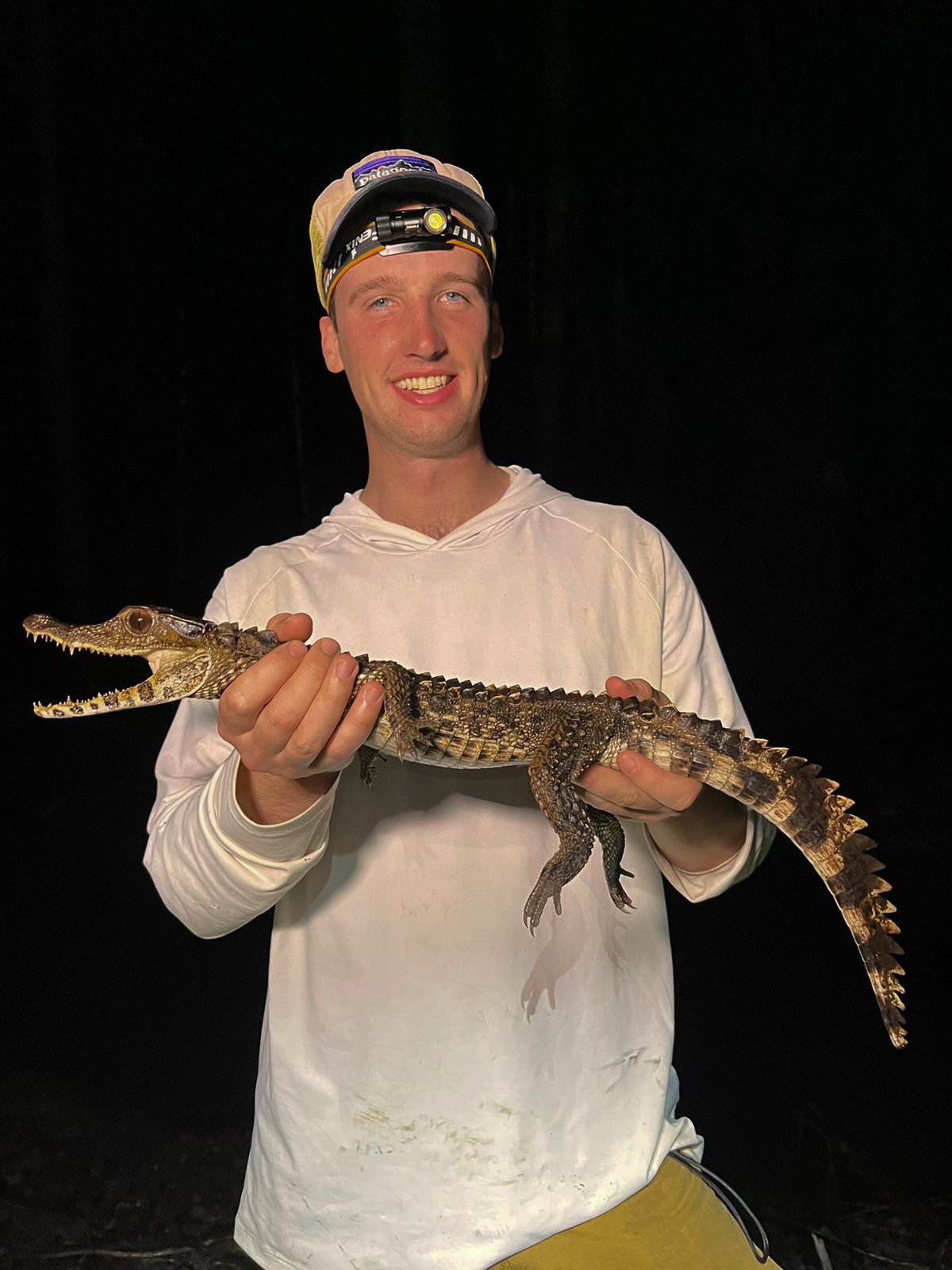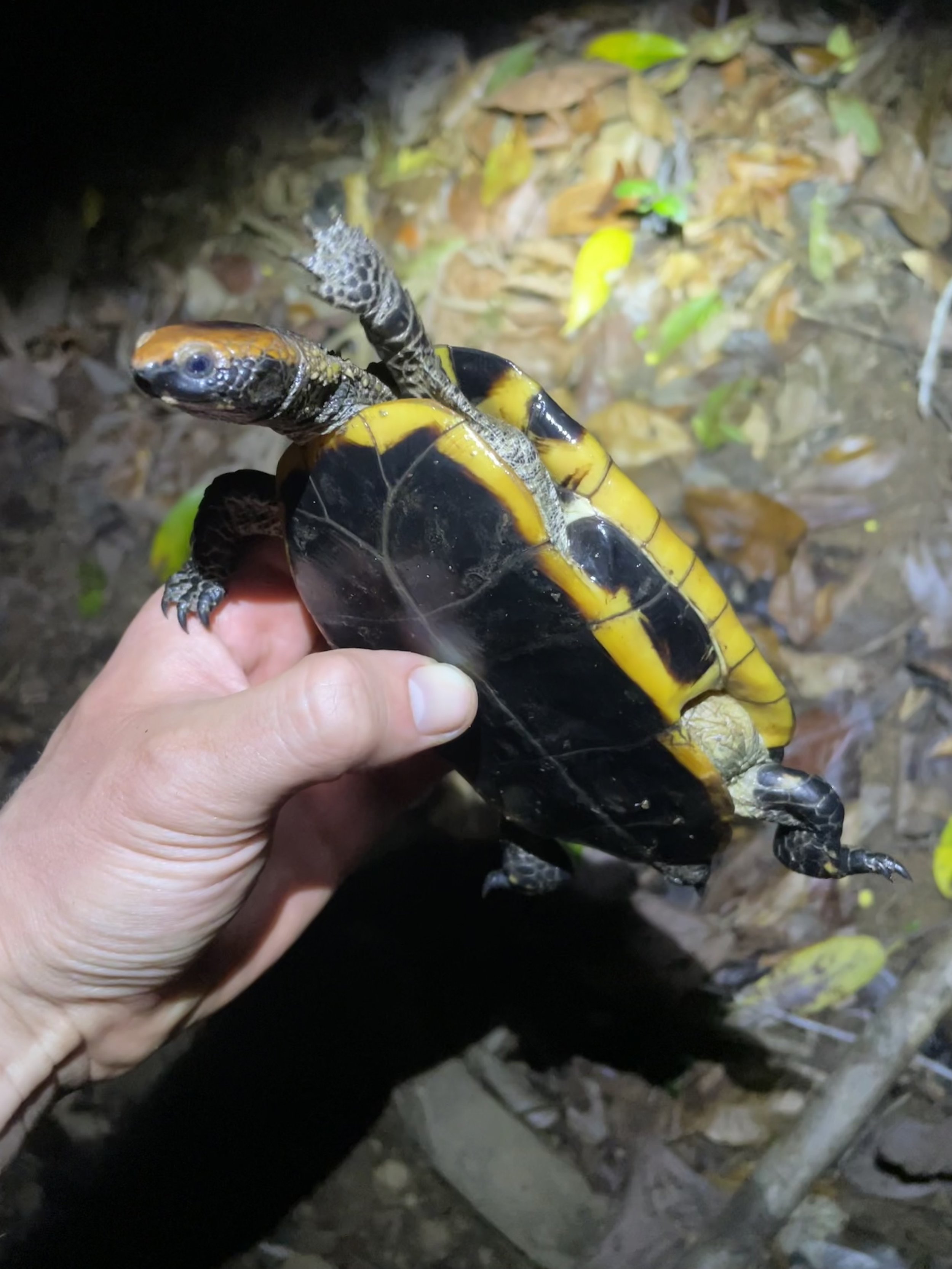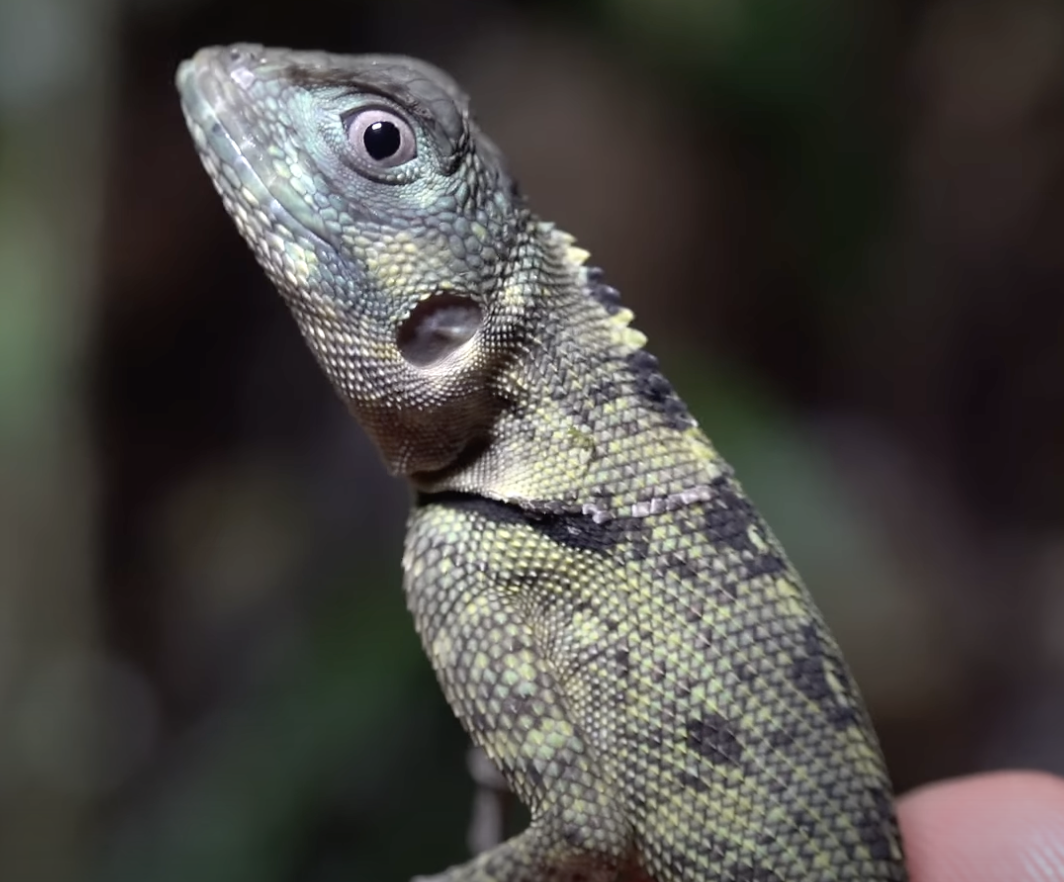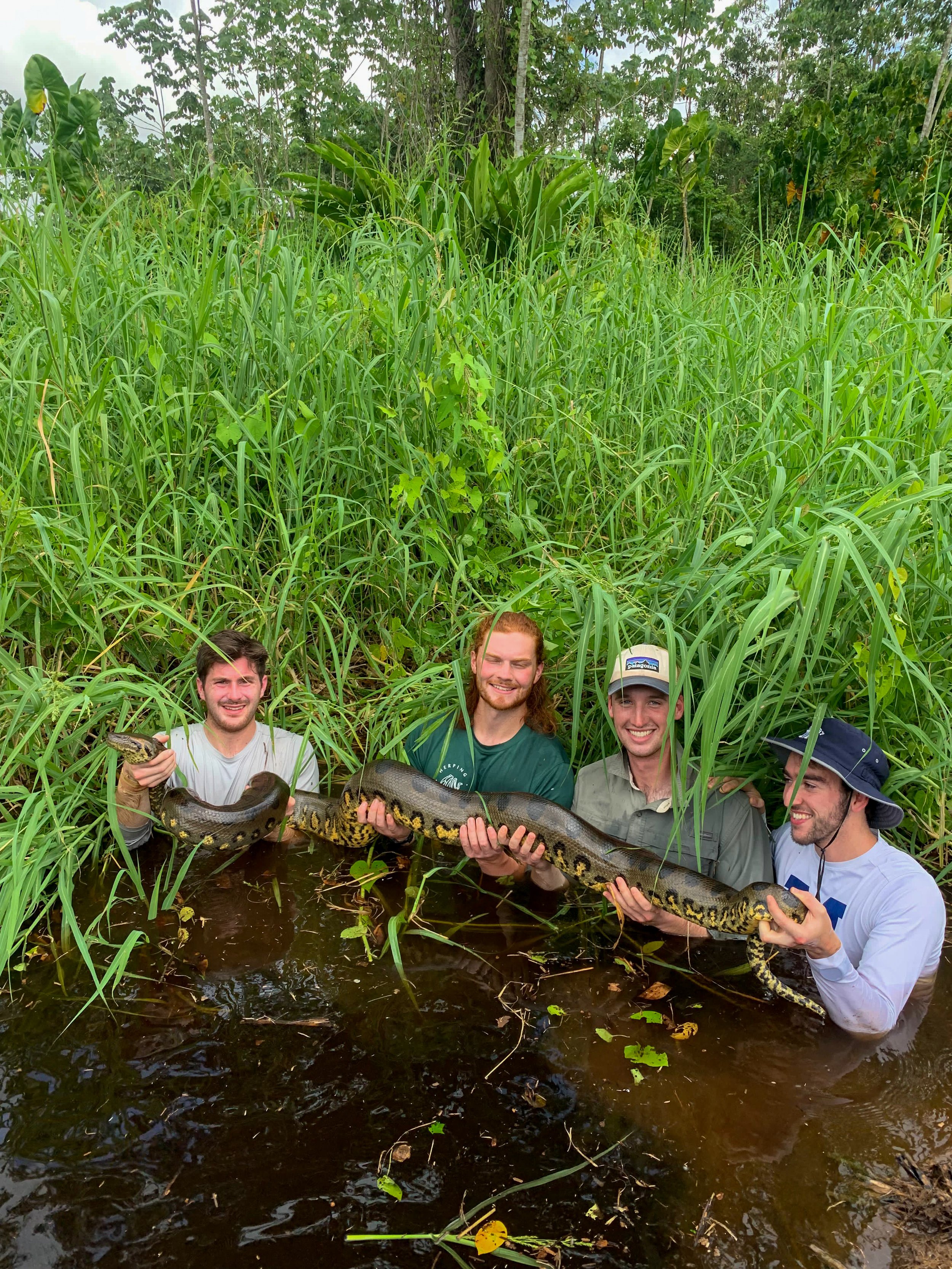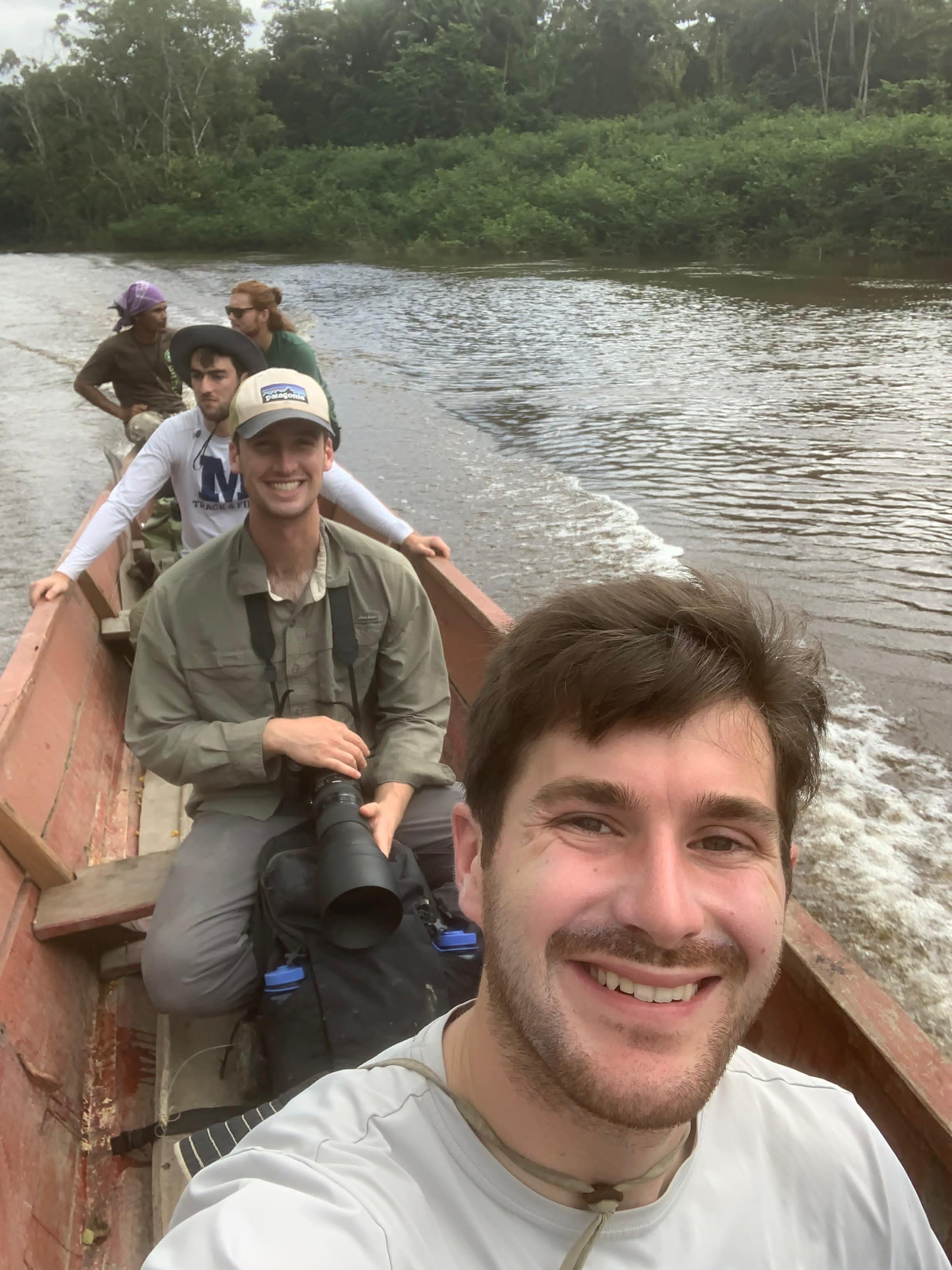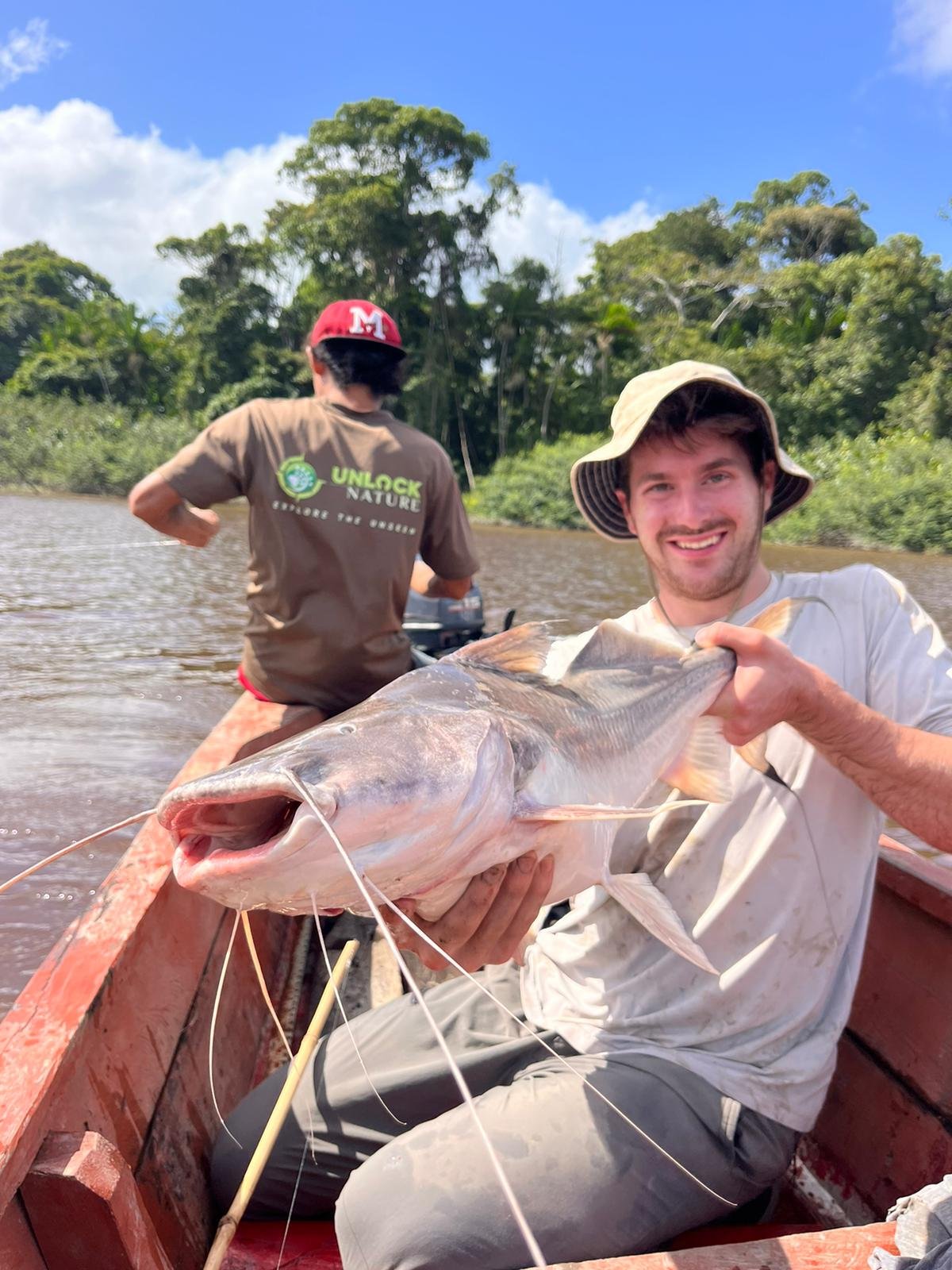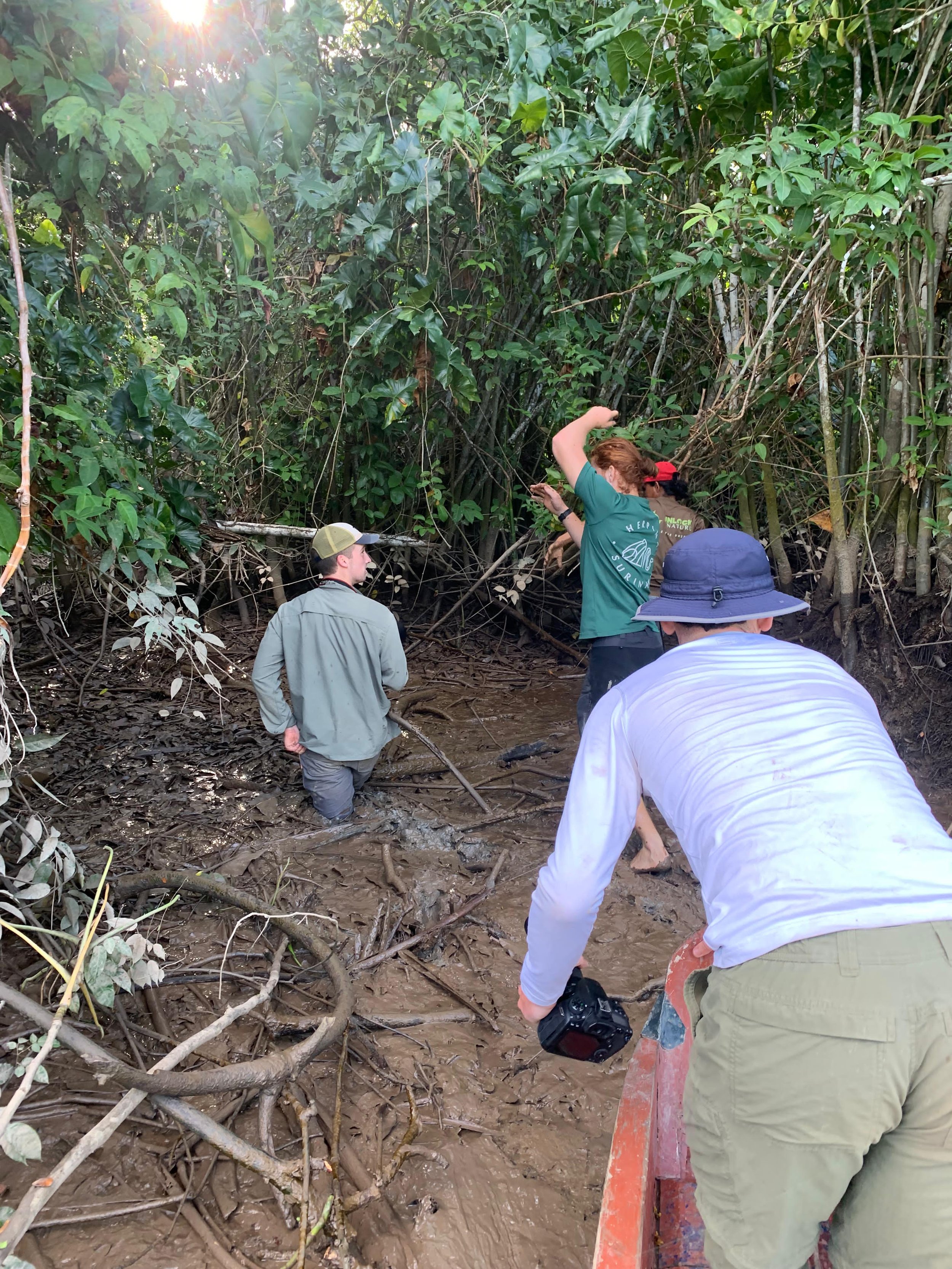Suriname Trip Report 2023
After a long journey, I arrived in Suriname, a developing country known for its rich natural resources and diverse biology and culture. Stepping off the plane onto the runway for the first time, along with my companions Will Robertson and Matt Durst, filled me with excitement. However, our enthusiasm was curbed as we found ourselves in international customs for about 4 hours, a typical experience in the country. Soon, our guide Matthew Wallace from Herping Suriname greeted us at the airport, and we were on our way to our first herping spot!
DAY 1:
After a short drive from the airport into the Brokopondo district, we jumped onto a boat which would take us downriver to our first destination. Upon arriving at our camp we were welcomed to an excellent dinner. Quickly thereafter, we stowed our belongings in our tents and then set off into the rainforest in search of wildlife. Sleep would be the last thing on our mind after encountering some amazing wildlife
Oxyrhopus melanogenys
Pink toed tarantula
Amblypigi sp.
Ameerega trivittata
Emerald tree boa in-situ
Despite the lack of sleep, we put in several hours of time to search for snakes with great success. We were particularly stoked to have turned up two very big targets on the first night: the tree boa and the emerald tree boa. We were tipped off by a local to the location in which he had seen this emerald tree boa. When we searched the area we found the emerald tree boa posed up perfectly in an ambush position. I was also very excited to have the opportunity to handle and appreciate a tailless whip scorpion and a pink toed tarantula for the first time. Additionally, we were able to
Helicops undulatus
Pithecopus hypochondrialis
Mastigodryas boddaerti
Chironius fuscus
Chironius carinatus
Emerald tree boa (Corallus caninus)
Tree boa (Corrallus hortulana)
DAY 2:
After our first full nights rest, we were finally able to get a feel for our surroundings in the daylight. We spent the day scoping out some interesting habitat, napping and casting the fishing line a couple times.
Suriname river
Convict tree frog (Hypsiboas calcaratus)
Smooth-fronted caiman
Chironius exoletus
Waxy Monkey Treefrog (Phyllomedusa bicolor)
Pipa pipa
Two very iconic frogs made an appearance this night. I decided to explore Suriname largely because of the fascination I gained for the Suriname toad (Pipa pipa) in my graduate herpetology course. This highly aquatic species of frog exhibits several unique characteristics that distinguish it from other anurans. For one, they are strongly dorsoventrally compressed and bear much resemblance to a leaf. Additionally, they do not possess a tongue and instead rapidly open their mouth to suck in small prey items. Much like other frogs they vocalize to attract mates but by a very different mechanism. Males of this species produce a clicking sound by snapping the hyoid bone in their throat. We were lucky to be able to observe this individual display his call.
Just above a man-made canal, we observed a fine par of waxy monkey tree frogs in amplexus. Not only was the size of these tree frogs very impressive, but the uniquely geometric shape to their body was unlike any other frog I had seen before.
DAY 3:
At the beginning of day three we began our drive to Brownsberg. Driving through several small villages really granted us perspective into some of the levels of poverty that are experienced in this country. As we began to climb the mountain to make it to our destination for the night, evidence of gold mining and slash and burn cultivation techniques became more and more apparent. While it is almost instinctual for a biologist to condemn the individuals responsible for this deforestation, many of the people down there are just trying to make it by however they can. Herping Suriname has been doing an excellent job of engaging with the public and trying to educate locals of the value that the forest possesses. On one hand you can level a patch of pristine forest for the chance to find finite amount of resources, or, you could use that area to raise money from sustainable ecotourism.
Ascending the mountain we finally reached the promontory at which our lovely accommodation overlooked the vast Brokopondo reservoir. The vast expanse of lush rainforest was interspersed with deserts- evidence of illegal gold mining. After taking in the views for a short while, we decided to take a daytime hike to a waterfall. Unfortunately, at the time I began to come down with flu like symptoms. I definitely was not feeling well but I knew I would beat myself up in reflection if I were to miss any experiences.
Bothrops atrox
Atelopus hoogmoedi
Boa constrictor
While making our way down the trail we came to a large clearing that appeared to have been formed by a large tree fall. We scoured any stump holes in that open area and began to move further down the trail. Will caught the glimpse of a fleeting Mastigodryas boddaerti moving quickly through a steep-sided drainage basin. As we all sat to take a better look this snake, Matt took a more thorough inspection of the ground beneath us and spotted a boa constrictor partially exposed from a small tunnel. Taking a closer look we realized that the boa constrictor was working down a sizable lizard. We made the responsible decision to the leave the boa be while it consumed the lizard.
I also was extremely excited to see my first Atelopus sp. in the wild. We encountered several Atelopus hoogmoedi (sometimes referred to as the harlequin toad) hopping through the leaf litter. Of the 80 contemporarily known species, 40% of them are considered possibly extinct. A bleak outlook remains for the surviving species, of which all of them are considered endangered or critically endangered. The decline of this genus has been strongly resultant from the spread of chytrid fungus.
As we ate dinner that night, the sky began to open up and it rained mercilessly for an hour right after dark. We were concerned that this might negatively affect our chances of finding certain species of snakes still sheltered in the trees. Surprisingly, before we were all even able to get our gear together to begin the night hike, our guide Matt Wallace spotted a Bothrops bilineatus high up in a tree within 100 ft of our cabin! Another huge target for the trip ticked off.
Bothrops bilineatus
Mesoclemmys Gibba
Xenopholis scalaris
Rhaebo guttatus
Emerald tree boa
Turnip tailed gecko (Thepadactylus rapicauda)
Bothrops atrox
Imantodes cenchoa
Bothrops bilineatus
DAY 4:
We spent the beginning of day 4 flipping logs to turn up some unique species. My favorite find of the morning was the annulated gecko (Gonatodes annularis). This remarkably spotted gecko immediately caught my eye while researching the herpetofauna of the area. The log rolling also yielded the first caecilians and the first typhlopid I’ve seen in their natural range. After dark, we began our routine nightly search of the surrounding forest. Will Robertson noticed commotion coming from a small puddle along the roadway and we stopped to sift the bottom to see what caused the activity. We were all surprised when Will pulled out a very unique turtle species. This twist-necked turtle (Platemys platycephala) sported some incredibly vibrant yellow colorations and a strongly contrasting black plastron. The uniquely concave vertebral scutes on this turtle contributed to the distinctive shape of its shell. These scutes, with their inwardly curved formation along the spine, create a striking appearance not commonly seen in other turtle species.
Platemys platycephala
Caecilia gracilis
Platemys platycephala
Gonatodes annularis
Emerald tree boa #4 of the trip
Rhaebo guttatus
Plica umbra
Siagonodon septemstriatus
DAY 5:
On the morning of day 5 we packed our belongings up from our accomodation at Brownsberg. On the way out we put in one last final attempt to try to turn up an Atractus sp. While we were unsuccessful at finding this fossorial snake, we had the great fortune of flipping a rock to reveal a juvenile boa constrictor. Perhaps this was good karma for having let the other boa constrictor be and we were able to get some good pictures.
Boa constrictor
View from atop the Jules Wijdenbosch Bridge crossing the Suriname River
Paleosuchus palpebrosus
DAY 6:
After a comfortable nights sleep at Sutopia Resort, we began our journey over to the Maratakka river. Upon arriving to this location, we were joined by the local guide from the area, Mike. Mike took us on a tour of the river. On this tour of the river we had the great fortune of being able to witness and capture a ~3m green anaconda. We all jumped in the water to get some quick pictures and then released the sizable serpent back to its business. Immediately after the anaconda encounter a family of giant river otters began to make a big ruckus in the water nearby. We caught an occasional glimpse of their heads surface and heard their iconic high pitched calls.
Green Anaconda (Eunectes murinus)
Fishing on the Maratakka River
Giant River Otters
Wageningen
DAY 7:
We decided to dedicate day 7 primarily to birding on the river. We woke up early and got out just as the morning chorus of birds was erupting. Flocks of toco toucans danced through the high canopy joined by several black-necked aracaris. We also saw a great number of orange-sided parrots and quite a few scarlet macaws. Despite the relative ubiquity of the great kiskadee in the areas we stayed, I was always excited to hear their joyful call from which their onomatopoeic name is derived. Perhaps the most noteworthy find of our birding expedition was the encounter with a pair of crested eagles. After catching a glimpse of them disappearing into the canopy we jumped off the boat on the muddy bank. I lead the charge jumping directly in and sinking nearly up to my waist. It was incredibly taxing to slog through the mud with my camera above my head until we made it to dry land. At this point my adrenaline was pumping and we were stalking through the forest trying to get a good view. I was able to snap some excellent photos of the crested eagle while it rested momentarily in a high branch.
While hanging out with our guide Mike, he showed us several pictures of some of his guests with 300+ lb catfish. We decided that we wanted to try to get our own chance at this, so we casted out some handlines and he let us use his heavy duty rod. Mike setup his traditional technique which was to tie the handline to the gasoline jug in the boat. Coincidentally Mike’s line began to get the first action and he without hesitation took the gas can and chucked it in the water. The gas can trailed the fish as it fought against the line. We followed the gas can around and Mike slowly and carefully reeled in the line with his hands- very dangerous business since the fish can pull the line rapidly through your hands leaving you with deep lacerations (we learned the hard way). Watching him hard at work like an expert was really a joy and a testament to his experience on the river.
Crested eagle
Blue and yellow macaw
Big catfish that Mike helped us catch
Toco toucan
Great kiskadee
Tiger catfish
Black-necked aracaris
On night 7 we took one last final trip to some mature upland forest that is most conducive for South American bushmasters (Lachesis muta). We arrived on location at around 10 PM and searched for bushmasters checking every stump hole and habitat feature we could until around 4 AM. While we struck out on trying to turn up the bushmaster we still encountered two new species for the trip. Had we not been so entirely absorbed by the bushmaster quest we would’ve and should’ve been more appreciative of these two stellar finds. I blame the poor decision not to photograph these snakes on a lack of sleep.
Pseudoboa coronata
Dipsas catesbyi
Trip recap:
We spent an excellent 7 days exploring Suriname on this tour with our expert guide Matthew Wallace. He proved to be a wealth of knowledge and was willing to go to great lengths to see that we were satisfied. He taught us many of the tricks of tropical herping which was entirely new to both Will and I. While traveling through the country we witnessed constant reminders of the unsustainable and exploitative use of natural resources. I commend Herping Suriname for their efforts in promoting sustainability and conservation. By engaging local guides and fostering environmental education among the community, they are making strides in preserving the region's biodiversity and heritage. I wholeheartedly support their endeavors and wish them continued success in their conservation-focused adventure.






